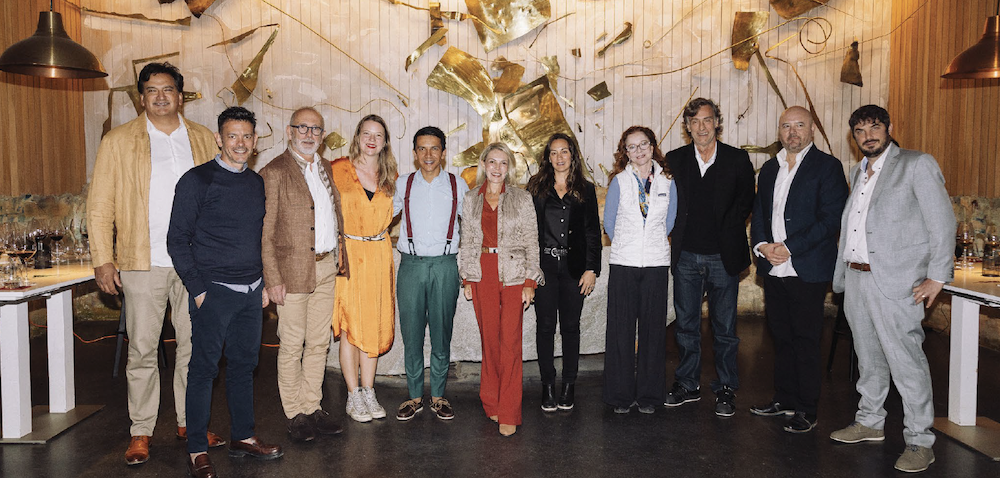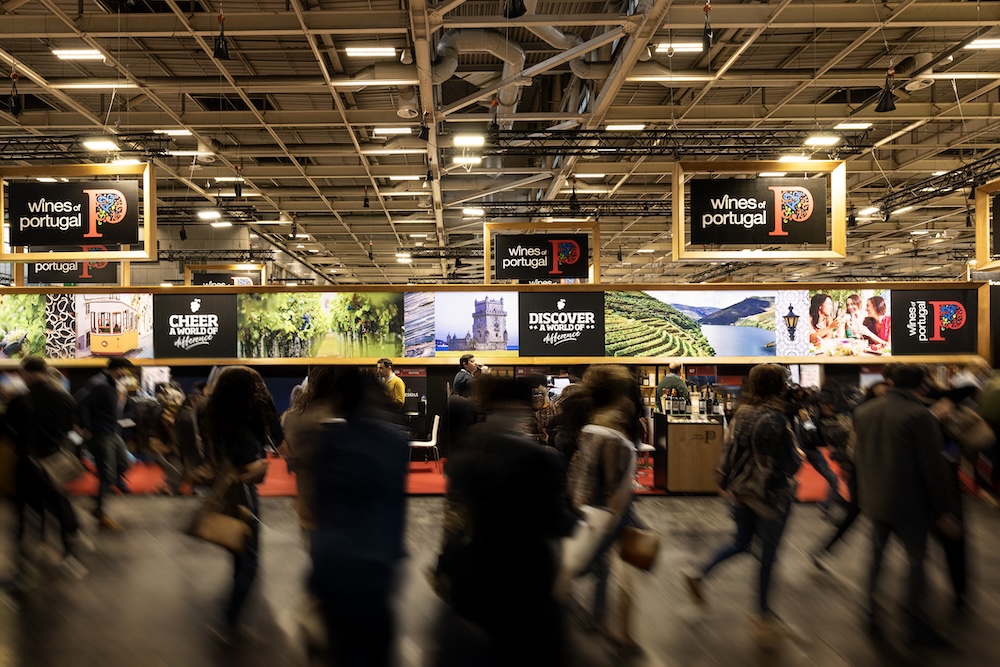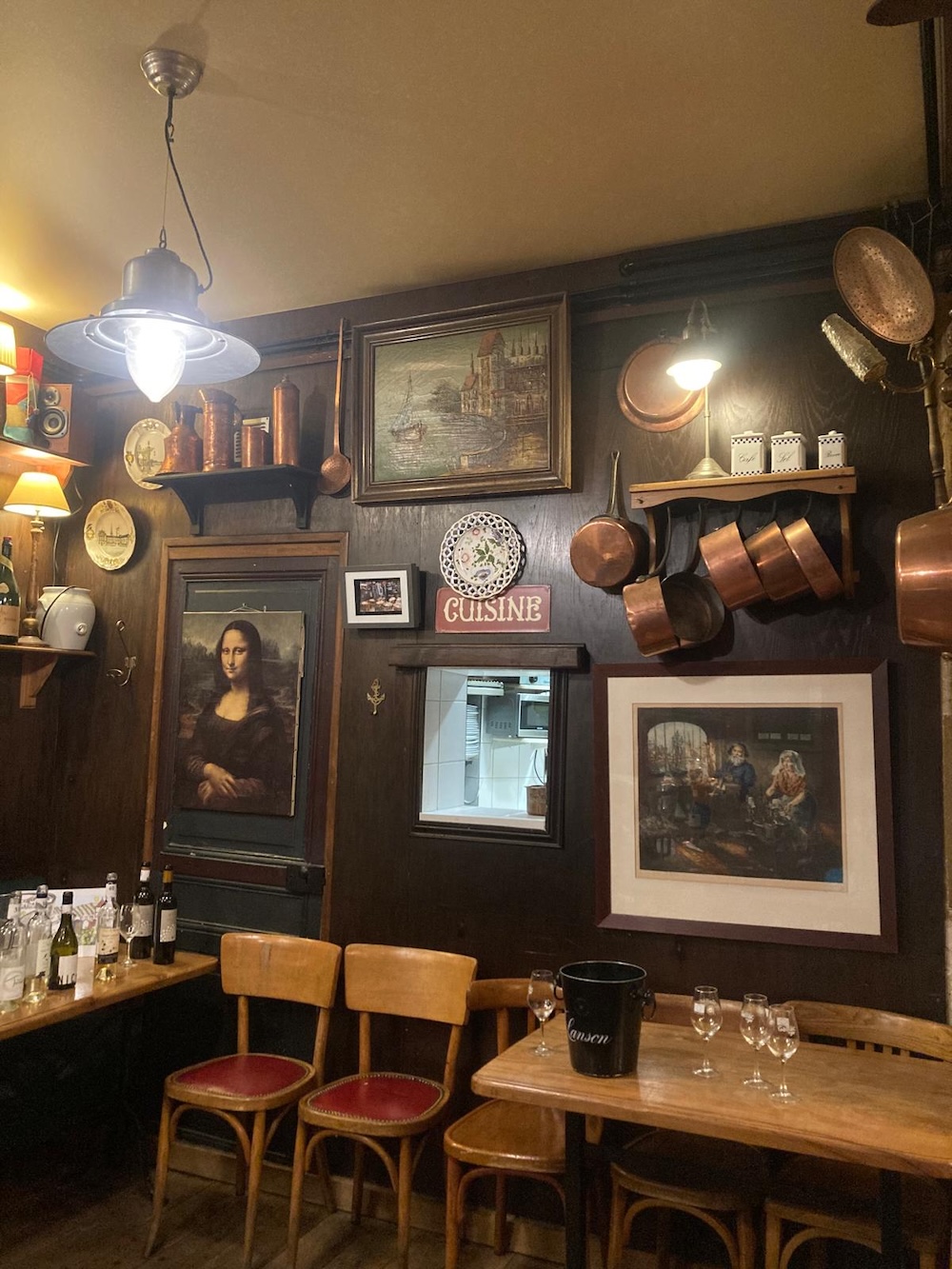
Discovery

Discovery
By Ožbej Peterle – Photographs: courtesy of the estates, posted on 29 July 2024
If you are reading this article, the chances are you are either a wine professional or a wine enthusiast. However, let me ask you a simple question: have you ever tried wine from Slovenia? Without wishing to be disparaging, there is a high probability that you haven’t. Well, that is about to change soon …
Slovenia, with its 20,256 square kilometers, is a small Central European country. Its regional climate is mainly defined by its proximity to the eastern end of the Alps, the Adriatic Sea, the Pannonian Basin and the Dinaric Mountain range.
Wine has been produced in Slovenia for more than two millennia, playing a significant role in Slovenian identity as well as in everyday life. With a total of less than 15,000 hectares under vine, like Switzerland or approximately one third of Austria's vineyard area, between 80 and 90 million liters of wine are produced annually. Seventy percent of this is white, and thirty percent red. Although Slovenia is geographically small, the diversity of soils and climate allows sixty different grape varieties to be grown and a wide range of wine styles to be produced, from sparkling and crisp whites to full-bodied reds.
There is a saying in Slovenia that you either produce wine or you know someone who does, since most of the 26,000 grape growers also produce wine for domestic consumption. It’s worth mentioning that 91% of all grape growers own less than 1 hectare of vines. There are 2,700 registered commercial wine producers. Most notably, eleven wine cellars produce more than 500,000 liters of wine annually. Exports do not exceed ten percent of production, with Germany, the USA, Croatia, and Holland being the most important markets.
Slovenia is divided into three wine regions, and each region is further divided into districts according to their distinct location, topography and climate. Ninety percent of area under vine is located on slopes and terraces. Irrigation is virtually nonexistent, and the vast majority of grapes are hand-picked.

Slovenian tuscany.
In north-eastern Slovenia lies Podravje, named after the river Drava. The region is divided into two wine districts – Prekmurje and Štajerska.
Prekmurje is located on the border with Hungary and is the second smallest wine district in Slovenia with 452 hectares under vine. Geographically, it is already part of the Pannonian Basin, however the majority of vineyards are planted on hilly slopes. It is famous for its white wine produced from Welschriesling and Chardonnay, and it offers one of the best examples of Blaufränkisch.
Štajerska Slovenija lies in the northeast and its name literally means 'Slovenian Styria’. The other part of Styria (Steiermark) lies in Austria. Štajerska Slovenija is the biggest wine district with 5,473 hectares of vineyards. The district gets its cooling influence from Alps in the west. The cooler continental climate promotes production of some of the most aromatic and crisp Slovenian whites: Sauvignon Blanc, Furmint, Riesling, Chardonnay, Welschriesling, Traminec and Muscat. Some world-class sweet wine can be found in Štajerska, although due to climate change, it has been more than a decade since conditions were suitable for the production of ice wine. Pinot noir is the flagship red grape variety, but lately Blaufränkisch has also been garnering greater recognition.

The legendary Špičnik vineyard.
The Štajerska district is home to one of the treasures of world wine heritage. On the banks of the Drava River in Slovenia's second-largest city, Maribor, is a vine that was planted towards the end of the 16th century. According to the Guinness Book of Records, it is the oldest vine in the world. Over its 450-year history, it has survived everything from Turkish rebellions and phylloxera to two World Wars and at least five recorded fires. The vine still yields between 35 and 55 kilograms of grapes, and the wine is usually reserved for ceremonial purposes.
A ten-minute drive from the old town of Maribor, on the hills overlooking the city, you will find a family-run winery: Joannes Protner, which has been producing wine for more than 200 years. Over its 18 hectares, 6 of which are farmed organically, it primarily produces crisp whites, with Riesling, Boštjan Protner's favorite grape variety, in the spotlight. The Pinot noir and skin-contact (orange) Natura are also amazing.

The Old Vine in the city of Maribor is the oldest in the world.
Posavje, named after the Sava River, is the smallest Slovenian wine region, covering 2,400 hectares. Here, family winemaking runs deep in the local culture. The average vineyard size is only 0.25 hectares, which means the majority of wine is consumed domestically. The locals are always kind and open-hearted, so be sure not to miss the opportunity if they invite you in for a glass of wine and some cold cuts at their ‘zidanica’, the wooden or stone-built cottages where they produce wine.
Posavje is divided into three wine districts.

The smallest wine district in Slovenia.
The Bizeljsko-Sremič district (706 hectares) is named after its two most important wine villages. The climate is sub-Pannonian continental, with cool winters and warm to hot summers. The most common wines are the white and red blends known as Bizeljčan PTP (Recognized Traditional Wine Style), made from local grape varieties. The red grape variety Blaufränkisch is showing increasing promise. A specialty here is Rumeni Plavec, an indigenous white grape with high acidity that has recently been used as a great component for sparkling wines, adding local character and distinction.

The vineyards of Bizeljsko in the Posavje wine region.
Bela Krajina is the country’s smallest wine district (315 hectares), located in southeastern Slovenia, bordering Croatia. It is the warmest district in the Posavje wine region, benefiting from warm southern winds off the Adriatic Sea. Bela Krajina produces varietal whites from Welschriesling, Muscat, Sauvignon and Chardonnay, and continental reds from Blaufränkisch and Pinot Noir. You can also find some world-class dessert wines in the region.
The Dolenjska district (1,379 ha) is closer to the Alps than the Bizeljsko-Sremič and Bela Krajina districts and is thus a cooler area. As the climate is cool continental, the best vineyards here are on steep, south-facing sites.
The low-alcohol, fresh, pale ruby Cviček PTP is by far the most popular wine here, but it is primarily consumed locally. Recently, wine producers have been focusing more on varietal white wines. However, the most important development is the production of sparkling wine, thanks to the excellent conditions afforded by the cool climate. Chardonnay and Pinot Noir are usually the backbone of the blend, but you should look for blends with local grape varieties such as Žametna Črnina, Kraljevina, or Rumeni Plavac. The best red wines in the district are made from Blaufränkisch.
Among the rolling hills of Dolenjska lies the wine producer Albiana, which produced its first vintage in 2018. The winery crafts elegant, crisp whites from Sylvaner and Welschriesling, as well as an oak-aged line called Alto, with Chardonnay the stand-out label. However, the main reason for visiting the winery is its sparkling wine made from Chardonnay, Pinot Noir, and the local Kraljevina grape variety. The Brut Rosé, made from the indigenous Žametna Črnina, is a must-try.
Primorska is the coastal region in the southwest of Slovenia. It is the warmest and largest wine region, with 6,332 hectares of vineyards. Most of the area enjoys a sub-Mediterranean climate. The region is also known for the famous northerly Burja (Bora) wind, which can occasionally reach speeds of over 150 kilometers per hour. Primorska is divided into four wine districts: Goriška Brda, Kras, Slovenska Istra and Vipavska Dolina.
Vipavska Dolina (Vipava Valley) is the largest district in the Primorska region, covering 2,107 hectares. This area is where sub-Mediterranean and continental climates meet, resulting in frequent strong winds and irregular heavy rainfall.
International grape varieties such as Merlot, Cabernet Sauvignon, Chardonnay, Sauvignon Blanc, and Pinot Noir have a strong presence in the valley, offering excellent examples and expressions of these famous grapes. However, the main reason for visiting the valley is its local and indigenous grape varieties. The unique Zelen and elegant Pinela (white grapes) are grown exclusively here and represent the soul of the valley. Rebula and Malvazija Istarska also showcase their own characters through fresh, skin-contact or oak-aged styles.
The best way to explore the Vipava Valley is by bicycle. Its breathtaking landscape and proximity to wine producers offer an unforgettable experience. Start your cycling trip at the beginning of the valley with the biodynamic producer Pasji Rep, named after a famous vineyard mentioned as far back as the 17th century in the book ‘The Glory of the Duchy of Carniola’ by Janez Vajkard Valvasor. Its white blend Moser (Rebula, Welschriesling, Malvazija, and Zelen) is one of the best examples of a local blend, and its Pinot Noir will sweep you off your feet too.
A few kilometers further downhill, you'll reach the village of Podraga. You might get lost in the lovely village but be sure to visit the Mitja Lavrenčič – Sutor winery. Mitja Lavrenčič is a producer known for precision, elegance and high quality. The best versions of international grape varieties in the valley, such as Chardonnay, Merlot, and Sauvignon Blanc, can be found in his cellar.
Next, head to Vipava, a picturesque town with a recently renovated main square, to visit the Poljšak winery. This family-run winery started producing wine in 1830 and is now managed by the fifth generation. Its Zelen and Pinela are very good, but the Merlot Selekcija is one of the best in the region.

Poljšak: wine and music are closely connected in the Poljšak Family.
It's a small climb to Planina, but the hard work will be greatly rewarded. The location of the biodynamic producer Guerila offers some of the most ‘Instagrammable’ views over the Vipava Valley. However, the biggest surprise awaits in the cellar. The Zelen and Pinela have been benchmarks for years, and the Rebula Extreme (skin contact) is intriguing. Additionally, the winery produces full-bodied reds made from Barbera and Cabernet Franc.

BRDA Home of Rebula.

Guerila: harvesting at biodynamic producer Guerila in the Vipava Valley.
The Goriška Brda wine district has 1,824 hectares of vineyards and lies on the border with Italy. The vineyards, planted at elevations ranging from 80 to 400 meters above sea level, benefit from the influence of the Adriatic Sea, which is just 20 kilometers away, and the Alps, from where a cold breeze cools down the vineyards on hot summer days. Layers of clay, marl, limestone, and sandstone, known as flysch or 'opoka', provide perfect drainage and promote freshness and balanced acidity in the wines.

Where vineyards meet the sea.
Goriška Brda, often called the Tuscany of Slovenia, is the most prestigious wine district in the country due to its high number of world-class producers. Brda is also the home of Rebula, the grape focused on the most. There are many iterations of this variety – fresh, oaked, skin-contact, sparkling and passito-style – and it is always delightful to discover them. In recent years, Sauvignonasse (formerly Tokaj Friulano) and Malvazija Istarska have been receiving more attention. You'll also find many skin-contact whites that could blow your mind. International grape varieties such as Chardonnay, Sauvignon Blanc, Pinot Gris, Merlot, and Cabernet Sauvignon have found a home here as well. Particularly, the Chardonnays and Merlot-based Bordeaux blends are outstanding.
If you are driving from the Soča Valley to Goriška Brda, you'll pass through the little village of Kojsko, where you'll find a family-run winery called Ferdinand nearby. It showcases Rebula in all possible versions – stainless steel, oak-aged (Epoca), skin-contact (Brutus), and also sparkling with a special project called Sinefinis. If you have lost faith in Pinot Gris due to overproduction and its universal presence, well, Ferdinand's Pinot Gris Epoca will reignite the spark.

Ferdinand: Jasmina and Matjaz Četrtič are the driving force behind the Family-Run Ferdinand winery.
The family-run winery Zanut is probably the westernmost winery in Slovenia. With an average production of 50,000 liters, it crafts an amazingly fresh style of Sauvignonasse (which it calls Zakaj) and Pinot Gris, as well as a charismatic Sauvignon Blanc, which shows unique characters in Brda. However, the oak-aged line is what the winery is most famous for, especially the single vineyard Merlot Brjač and Jama (skin-contact Sauvignonasse).
Located in the town of Dobrovo, Klet Brda is the largest wine cellar in Slovenia, with an annual production of more than 5 million liters. It operates as a co-operative with 400 families of grape growers, farming grapes across 1,000 hectares. Klet Brda is the leading co-operative in Slovenia and serves as an example of good practice. Numerous international awards prove that it is on the right track. While the Quercus and Bagueri lines have consistently offered the best price-performance ratio, those eager to experience the high-end offerings should visit the new Baguer cellar located in Dobrovo Castle.
Almost on the border with Italy, in the village of Vipolže, you will find the recently renovated wine cellar of Edi Simčič. Today, his son Aleks runs the cellar, while his sons Jakob and Jure are already making their mark. Consistency, high quality and the pursuit of perfection define this cellar. Its single vineyard wines, such as Rebula, Chardonnay, and Sauvignon Blanc from the Fojana and Kozana vineyards, are truly remarkable. If you want to impress at a blind wine tasting of Grand Cru Classés from Bordeaux, bring along its Merlot Kozana – you'll understand why.

Edi Simič : Jakob Simčič holding the famous opoka soil.
Kras (or Karst) is the smallest district in Primorska, covering 564 hectares. It lies on the limestone plateau between the Vipava Valley to the north and the Gulf of Trieste to the southwest. The mountain range creates a natural barrier toward the sea, resulting in a predominantly continental climate in the Karst region. The wind known as Burja (Bora) expresses its full force in this part of Slovenia. Karst is renowned for its ‘terra rossa’ soil, characterized by its bright red color and rich iron oxide content, formed by the weathering of limestone.
Teran PTP is the most important wine in the Karst district. It is made from Refošk (the Refosco grape variety), which covers three-quarters of vineyard area. The wine has a deep ruby color, medium body, low to medium alcohol, red fruit-driven characters and crisp acidity. It makes the perfect match for the local prosciutto. Among white grape varieties, the native Vitovska Grganja has been attracting more attention in recent years and is available in a variety of styles.
The Vinakras Co-operative, located in Sežana, is the largest producer in the district. Teran accounts for the majority of production and comes in various forms, from young, fruit-driven styles aged solely in stainless steel to full-bodied, oak-aged wines. The cellar's best pours include the single vineyard La Marie line, which showcases the finest expression of what the local Vitovska and Teran can offer.

Vinakras: teran and proscuitto are the perfect match in the Karst Wine District.
Slovenska Istra lies in the southwest of Slovenia, and it is the only district with direct access to the sea. Here, 1,837 hectares are planted to vines. Istria is the largest peninsula in the Adriatic Sea, shared between Slovenia and Croatia. It is the warmest wine district in Slovenia and it has a Mediterranean climate with hot summers and mild winters. The climate is particularly favorable for late-ripening grape varieties such as Cabernet Sauvignon and Syrah, which sometimes struggle to fully ripen in other districts of Primorska.
Two grape varieties are predominant in Slovenska Istra, with Refošk (Refosco) reigning as ‘the king of Istra’, covering almost half of all vineyards, and Malvazija Istarska as ‘the queen’, cornering more than 30% of vineyard area. Refošk is typically bottled as a single variety, although blending with international varieties such as Cabernet Sauvignon, Merlot, and Syrah is also common.
In the heart of Slovenska Istra, in the lovely village of Korte, lies the biodynamic producer Korenika & Moškon. With only 25 hectares of vineyards, the winery produces between 50,000 and 60,000 liters of wine. Its philosophy includes low intervention winemaking, indigenous yeast, spontaneous fermentation and minimal use of sulfur. While the fresh line forms the backbone of production, the Cru line – wines from single vineyards – show the best this terroir has to offer.
The Glavina family has played a pivotal role in the village of Šmarje since its establishment. Sixth-generation Nika is now running the Santomas winery. It focuses primarily on full-bodied reds made from the local Refošk variety, as well as blends with Merlot, Cabernet Sauvignon, and Syrah. When it first submitted its wines to be rated by Robert Parker, all of them received 90 or more points. Its Grand Cuvee, made from the Refošk grape, received an impressive 95 points.
Slovenia is a boutique wine country where artisan wines are produced. This is where tradition meets innovation, and where passion and devotion to winemaking are passed down from generation to generation. It is a small country showing versatility in terms of wine styles, grape varieties, and philosophies of wine producers. Most producers are family-run operations with small-scale production, dedication to precision and quality, and a strong commitment to sustainability.
To form your own opinions, visit picture-postcard Ljubljana with its vibrant wine bar scene. From there, you can reach all three wine regions within an hour's drive – each in its own special way has so much to offer. The quality of both wine and gastronomy has come along in leaps and bounds over the last twenty years, pleasantly surprising anyone who visits this hidden gem.
Ultimately, a visit to Slovenia is not just about the wine; it is also about the picturesque, unspoilt scenery, the amazing food, vibrant cities, historical sites and hospitable people. After all, wine is all about people.

Discovery

Discovery

Discovery